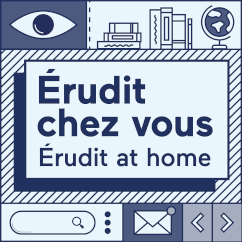Abstracts
Résumé
Accorder la félicité intellectuelle avec la vie bienheureuse, telle est la voie originale empruntée par Maître Eckhart. Plutôt que d’insister sur une « vision différée », Eckhart plaide en faveur d’une « vie immédiate ». La nuance entre vision et vie est déterminante. Tout en maintenant que la foi n’est pas la vision, Eckhart montre que la vie est le lieu d’une expérience possible de l’union à Dieu, sous certaines conditions. Sa « théologie de la béatitude » induit une réévaluation de l’articulation entre foi et raison. Dérogeant à l’« épistémologie générale du savoir » dominante au tournant du xiiie et xive siècle, Eckhart intègre le dict dionysien selon lequel : « Toutes les affirmations sur Dieu sont dites incompactes, mais les négations sont vraies ». C’est par voie de participation à la cause que l’affirmation trouve son sens. Le passage du probable à la vérité se passe dans le « pâtir » (pathein) que l’on ne peut « enseigner » (mathein) en tant quel tel : divina patiendo, non discendo ab extra.
Abstract
Master Eckhart’s original approach was to combine intellectual happiness with the blissful life. Rather than insisting on a “deferred vision”, Eckhart argues in favour of an “immediate life”. The nuance between vision and life is decisive. While maintaining that faith is not vision, Eckhart shows that life is the place where union with God can be experienced, under certain conditions. His “theology of beatitude” leads to a re-evaluation of the relationship between faith and reason. Departing from the “general epistemology of knowledge” dominant at the turn of the thirteenth and fourteenth centuries, Eckhart incorporates the Dionysian dictum that “All affirmations about God are said to be incompact, but negations are true”. It is through participation in the cause that the affirmation finds its meaning. The passage from the probable to the truth takes place in the “pâtir” (pathein) that cannot be “taught” (mathein) as such : divina patiendo, non discendo ab extra.

